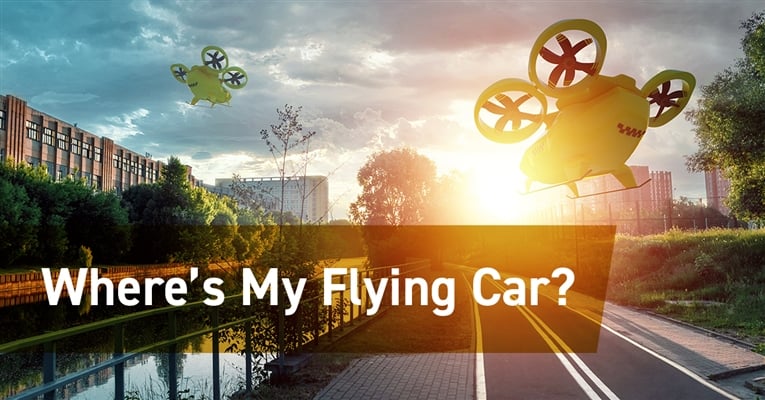When I think back to my childhood and many a Saturday morning watching cartoons like “The Jetsons” or sci-fi shows like “Lost in Space,” it occurs to me that much of what I envisioned for the future has come to pass. George Jetson woke up to a talking alarm device and told it to shut up. Do you ever talk back to your digital assistant? Household robots, push-button food and drink, devices that we can talk to, holograms, wearable telecommunication devices, and autonomous vehicles will soon be dropping your kids off to school. While we are not sure what powered the Jetson’s flying car, hydrogen powered flying taxis are currently in development; ready for test flights as soon as governments offer regulatory approval.
Getting here took fifty plus years of hard work, investment, and developing digital tools to engineer the future. Now, companies are undergoing digital transformations to control the operational lifecycle of their products and to prepare for the "future" future. They understand that to build more resilient products, sustain strategic change, and generate future business value, requires coordinated, complete, and connected information of the end-to-end lifecycle of their products. Disrupters create and benefit from a digital thread of actionable data, communicated to internal and external stakeholders throughout the lifecycle.
Along the way there have been disruptions that are accelerating digital transformation. Distributing workforces and technology in new and sometimes experimental ways in response to a pandemic, unplanned for, unwanted and charged with uncertainty, causes major disruption. The tragedy of human loss extends into the business world. Responding appropriately may cross the line from innovative to failure. How we respond taxes our systems, process and culture. Forced change can be a curse or a blessing and also opportunity. Companies that are resilient, adaptable will survive and prosper in this new environment.
What’s more, data and technologies must evolve, to be used in new ways, requiring a flexible approach, and a platform to reside on. For a business to sustain transformation year over year—including the next technology and service innovations that haven’t yet been realized—actual flying cars, robotic maids that become members of the family, and perhaps most sadly, the three-day work week―information and actions must be managed end-to-end across the product’s lifecycle, on a platform that can continually be added to, adapted, upgraded, and evolved to meet the company’s ever-changing strategic needs.
Understanding the customer experience, including operational and service data can support the right strategic choices. Did we build the right product? Do we know what is working and can we make timely and effective changes? Those who anticipate and meet customer needs in new ways; identifying and driving trends, realizing them in new and improved offerings, responding quickly to the customer experience, are disruptive and successful. While innovation can disrupt, better strategies will sustain future growth. Effective ways to reconfigure business models that benefit the customer and the company, defines disrupters.
Digital Transformation is not just over the horizon, it is here and now, causing more and more pain for those who are not prepared; opportunity for others. Your technology platform must be flexible enough to capture and connect the information about the decisions that led to change during the product’s lifecycle. You can only own the future if your platform can configure and understand the context of service data critical to validating requirements and the genesis for strategic agility in today’s future.
Building the future is not for the faint of heart. Living in today’s reality can be as daunting. Change can be difficult, digital transformation is hard, especially when it is forced upon us by competitive innovation, mergers and acquisition, or a virus. Prospering in uncertainty is for those who own their product’s lifecycle, who own the complex connections facilitating change, who own the processes, integrations, and workflows of a digital thread. They are those who own the future with a platform that manages configurations and data from services in the field. These are the companies that not only embrace the future but also take control and create the future.

